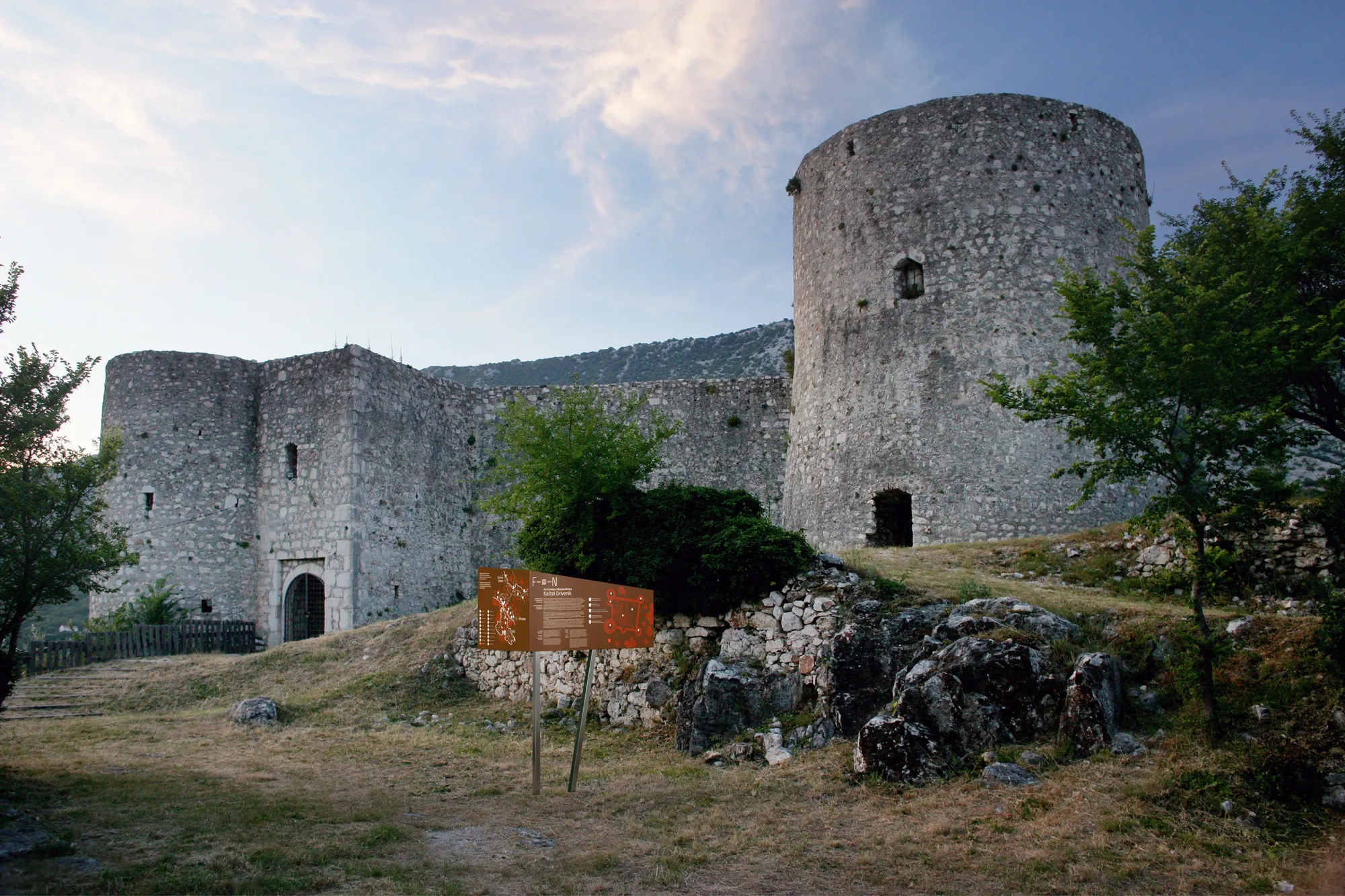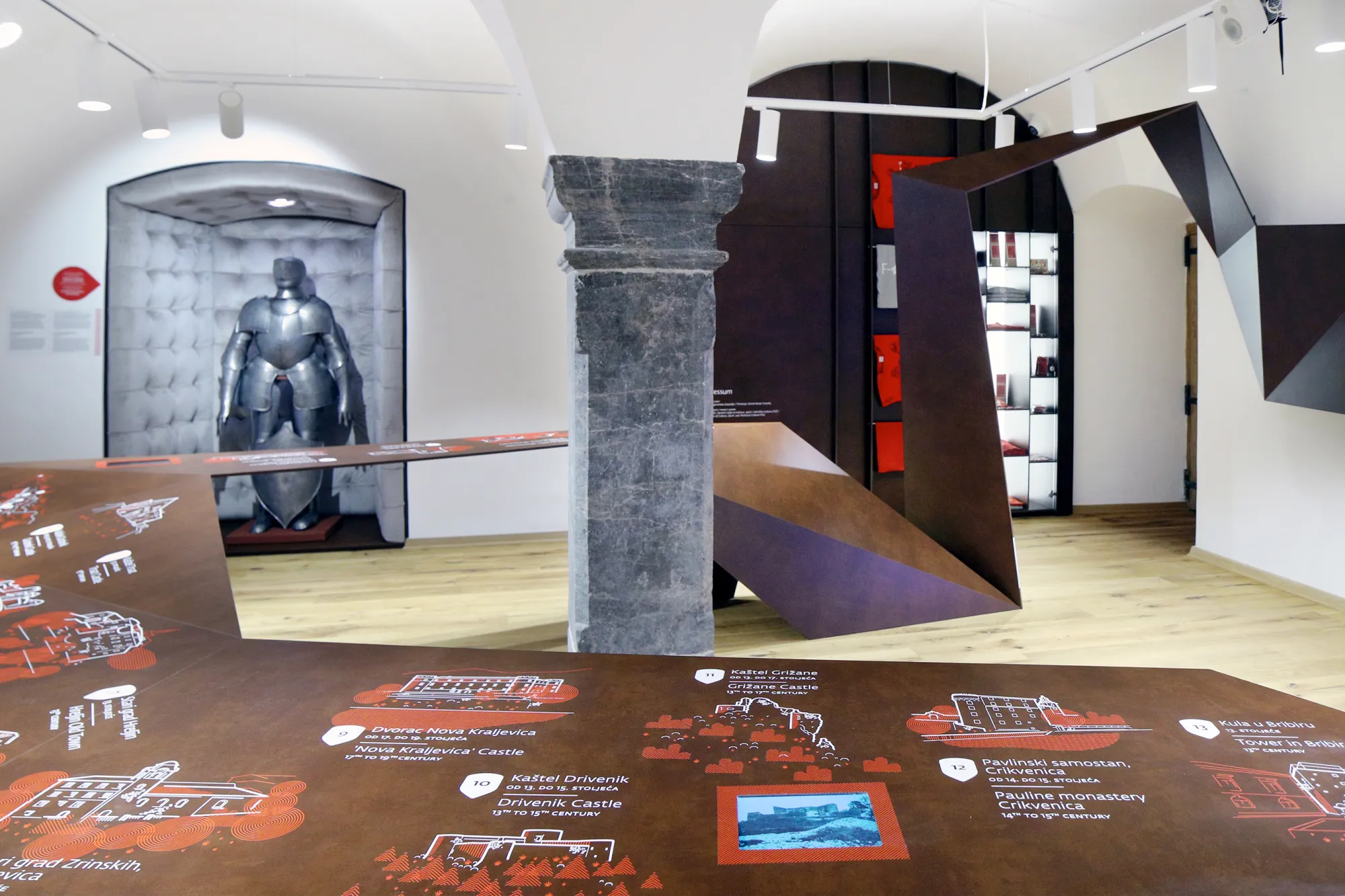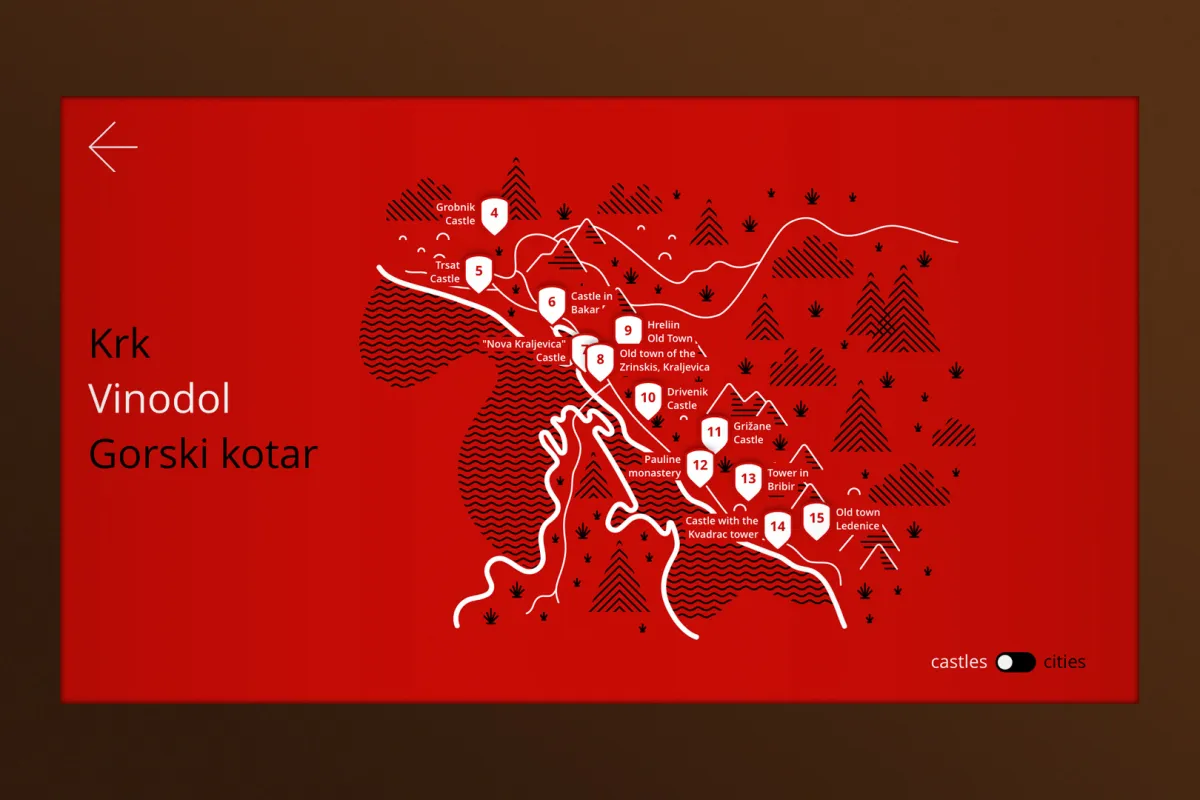Case study: The Routes of the Frankopans

Background
The regional authority of Primorje-Gorski Kotar County in Croatia developed a new cultural tourist product — The Routes of the Frankopans, a unique trail consisting of 20 historic castles and churches once owned by the Frankopan family, offering visitors an opportunity to explore one of Croatia's most significant noble lineages.
The project transformed scattered historical sites into a cohesive cultural experience, making Croatian medieval heritage accessible and engaging for visitors while supporting regional tourism development.
Challenges
Our primary challenge was the scarcity of visual and archival material, which left us with insufficient input for developing a comprehensive visual identity. The interpretation centres were thick with historical texts that needed to be rewritten into engaging content for children and adults with varying levels of interest in history. The timeline was demanding, with only five months allocated to the design and implementation of seven complete interpretation centres.
Finally, the absence of visitor data at most locations meant we had to develop signage and wayfinding systems without understanding typical visitor patterns or behaviors.
Process
First, we established a visual foundation onto which we built a visual system for the route with over fifty original illustrations of historical characters, castles, and geographical maps, all designed specifically for this project.
Working with interpreters, museologists, architects, video artists, and developers, we introduced interactivity and gamification to breathe life into dense historical content. Each interpretation centre has a multimedia application presenting functional overviews of the route’s locations and key historical figures, along with site-specific experiences. Extensive archival material was reworked into engaging, accessible formats for all audiences.
Signage consisted of four typologies: road traffic signage, pedestrian signage, interpretative signage, and functional signage in castle interiors.
Lastly, we designed and produced a series of souvenirs to promote the route even after visitors have left.
Solutions
The visual identity reflects the central idea of the route — exploration of rich cultural heritage. The pictograms build a story of family identity that unfolds during the exploration of physical locations — from the lion of the family’s second coat of arms, to the Glagolitic letter, to the crown as a symbol of power, and more.
Filburg created custom illustrations of numerous historical characters whose images have been lost over the centuries. We also illustrated all the ancient castles and maps of relevant geographical areas, to be used across various print-ready and interactive channels. The system adapts seamlessly to various media and formats.
User experiences needed to engage a range of audiences across age groups and with varying levels of computer literacy. The content for each interpretation centre includes numerous multimedia applications showcasing everything—from a functional overview of the route’s locations and key historical figures to interactive experiences such as a fortune-teller, a chat with a dormouse, an animated augmented reality depiction of the Virgin Mary's house being carried from Nazareth to Trsat, a 3D reconstruction of the Battle of Krbava Field, and many more.
Each signage typology adheres to its own set of principles as well as regulatory, conservation, and content requirements, making this a highly complex task. Interpretation totems complement the narratives presented in the interpretation centres while serving as the sole interpretative content at locations without a centre.
A series of made-in-Croatia promotional products was also designed and produced, including adult and children’s T-shirts, sweatshirts, backpacks, umbrellas, badges, fridge stickers, and more.



Impact
A forgotten historical route was transformed into an accessible, engaging cultural experience, breathing new life into the Frankopan legacy for modern audiences.
By combining illustrations, interactivity, and gamified storytelling, both children and adults were able to resontate with the content regardless of their digital literacy.
A clear visitor journey was successfully established across 20 historically dispersed locations, providing intuitive guidance and enhancing the overall experience.
The team effort resulted with the BIG SEE “Tourism Design Award 2023”.